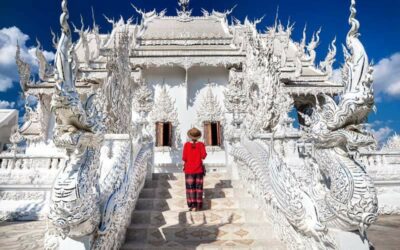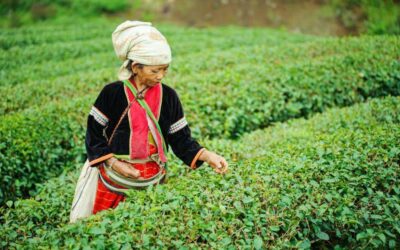
Country Profile
- Official name: Kingdom of Thailand
- Capital city: Bangkok
- Population: 68 million
- Language: Thai
- Local time: GMT+7
- Power voltage: 220 V, 50 Hz
- International dialing code: + 66
- Official Flag
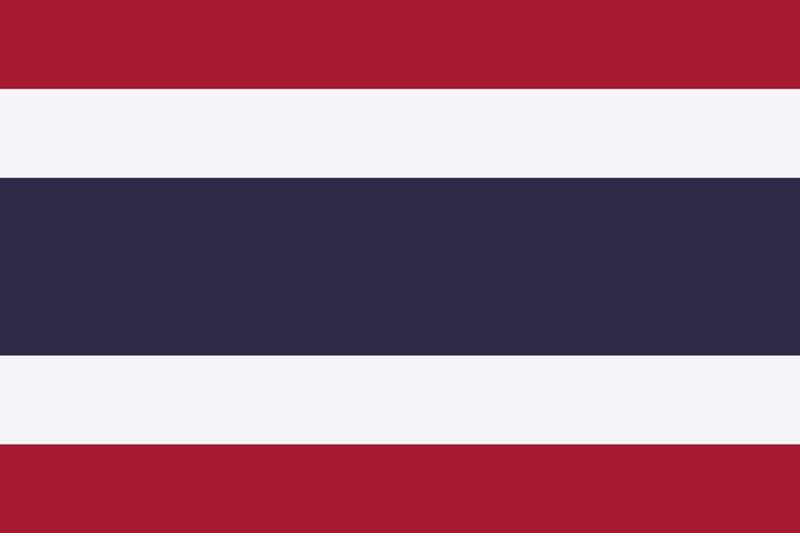
The blue represents the monarchy, white for Buddhism, and red for the blood of the people who fought for freedom during WWI.
Q: Do I need a visa?
A. Thailand luckily allows 57 different countries and territories visa-free access to its shimmering beaches, exotic cities, and scenic mountains. The majority of these countries can get a free visa for 30 days if entering by air and 15 days if crossing land borders, with a very lucky few like Argentina, Brazil, Chile, South Korea, and Peru getting 90 days!
Countries not included in the group above can apply for Visa on Arrival or apply for Thai tourist visas in their home country’s Thai embassy. It’s best to check your country’s respective travel page for updated and detailed information on visa, or check here for more information.
Q: What kind of currency is used in Thailand?
A. The official currency of Thailand is the Thai Baht (฿) (THB) which is approximately 32 THB = 1 USD. Bills are divided into 20, 50, 100, 500, and 1000 notes while the coins have value if 1, 2, 5, and 10 THB.
Most currency exchange locations take a variety of foreign currency and exist at the airport, hotels, and in tourist destinations. Just remember to shop around for the best rate in town before handing over your money, as some places have poorer values than other.
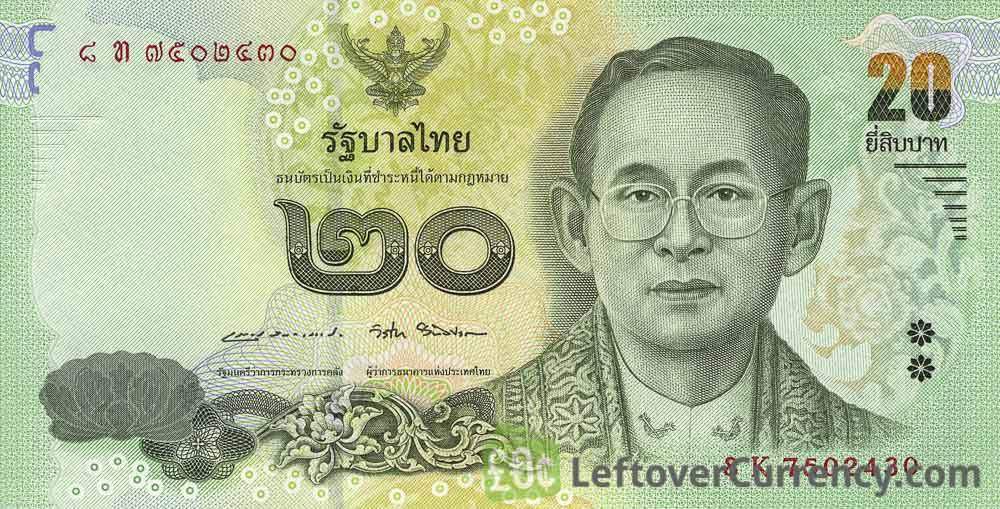
Thai baht banknote
Q: What is the national language of Thailand?
A: The national language of Thailand is Thai. Due to the variety of international guests visiting Thailand, Thai people often speak other languages, most notably English and Chinese. However, learning a few basic Thai words can help make travelling even easier and ensure more chances for cultural interaction.
- Hello: Sa wa dee ka (for women) sa wa dee krup (for men)
- Thank you: Kop koon ka (for women) kop koon krup (for men)
- Sorry: Kor tot
- Good bye: La gon
- How much?: Nee tao rai?
- Too expensive: Paeng maag
- Yes: Chai
- No: Mai
Q: Can I access Wi-fi or 3G/4G networks?
A. You won’t have any trouble with network connection in Thailand thanks to free Wi-Fi access provided by most cafés, restaurants, malls and hotels. There are also three main cellular companies in Thailand offering great 3G/4G networks, True, AIS, and DTAC, for an affordable price of USD1-3 for a SIM Card and then a pay-as-you-go package.
Q. What should I eat while visiting Thailand?
Thailand is renowned worldwide for its cuisine and best-listed dishes. When in Thailand, make sure to try some of these iconic dishes to fully appreciate the unique and colorful culture of the land of smiles.
- Tom Yum Gum: This sour and spicy soup is made from shrimp and typical Thai spices and herbs. Coconut milk and cilantro leaves are then added to enhance the aroma as well as the flavour of the dish.
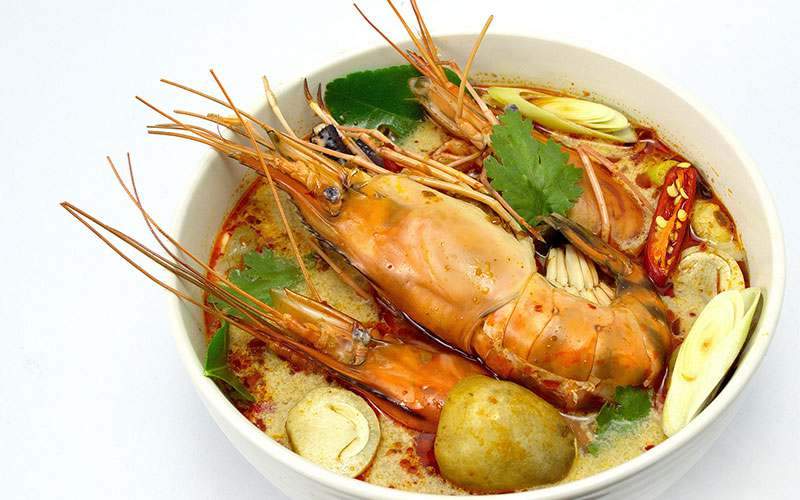
The national dish of Thailand, Tom Yum Soup
- Pad Thai: Another highlight of Thai cuisine is this stir-fried rice noodle dish with ingredients like shrimp, bean sprouts, tofu, and eggs served with lime and banana flowers. The dish can also be prepared with chicken, beef, or pork.
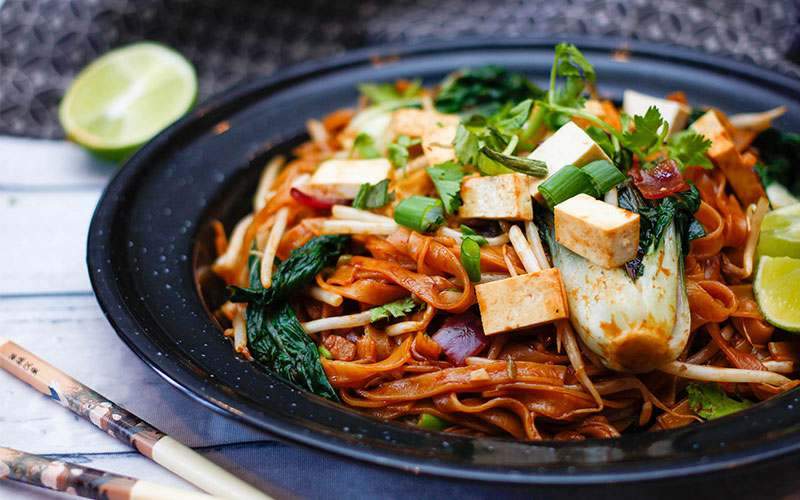
Add a bit of peanuts to your Pad Thai to make the flavour just right…
- Som Tum: The special flavor of this salad is created by mixing fresh green papaya, sour lime juice, sweet palm sugar, spicy chilis, and salty fish sauce to utilize the five different components of flavour.
- Massaman curry: A rich, relatively mild curry originally thought to have been brought to Thailand by Muslim immigrants and traders from South Asia with spices such as star of anise, cardamom, cinnamon, cumin, cloves, and nutmeg which are not commonly used in Thai cuisine. These flavours mixed with more typical spices are blended with coconut cream before adding potatoes, onions, and usually chicken, and served with rice.
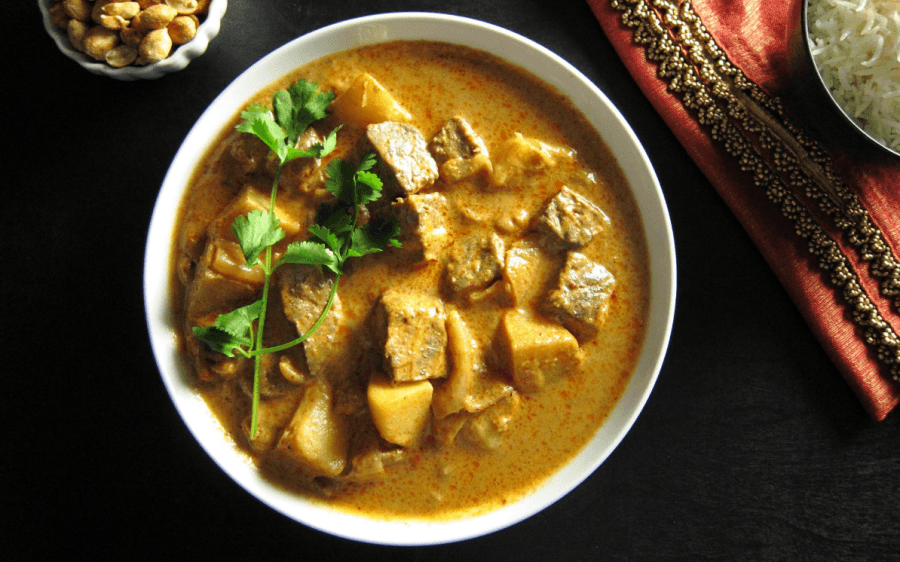
The delectable Massaman curry, a fusion of Arabic, Indian, and Thai flavours
- Kao Niew Ma Muang: A top dessert in Thailand, this delectable delight is made with glutinous rice, fresh mangoes, coconut milk. and drips of super sweet condensed milk.
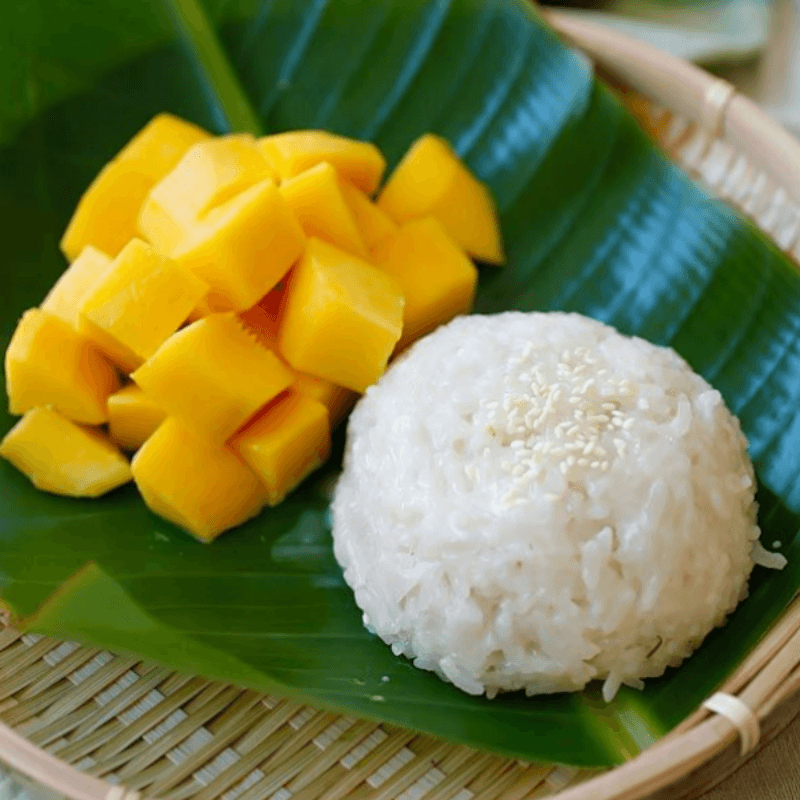
Everyone’s favourite Thai dessert
Q. What’s the weather like in Thailand?
A. Most of Thailand has a savannah climate; however, the southern and eastern tips of the eastern region have a tropical monsoon climate.
In addition, there are three seasons in Thailand. The first one is the rainy or southwest monsoon season which lasts from mid – May to mid – October. This is an ill-advised time to visit the northern regions due to mud-slides and inaccessibility. The next period between mid – October and mid-February is the winter northeast monsoon. During this time, Thailand experiences dry weather with mild temperatures, and is considered peak season for travel with higher rates and more crowds. The last season is called summer or pre – monsoon season which occurs from mid – February until mid – May with hot temperatures and dry weather as typical characteristics.
Q. What kind of local transportation is available?
A. Thailand has tons of different kinds of affordable local transportation with affordable prices. Within Bangkok, an aerial tram system called the BTS or Skytrain, is extremely convenient and fast. There are two BTS routes, namely Silom and Sukhumvit. The price for one ticket varies from 10 to 52 baht depending on your destination. If you intend to use Skytrain as the main means of transportation in Bangkok, you should buy a one-day unlimited pass for 130 baht.
There is also the metro system, the MRT, with prices ranging between 14-60 baht for a single ticket, 120 baht for a day pass, 230 baht for a three-day pass, and 1400 THB for a month pass.
- Throughout Thailand, tuk tuks are a cheap and ubiquitous icon of Thailand. The price for each 5-minute ride usually starts around 30 baht but make sure to bargain and agree on the price before getting in.
- Taxis are especially convenient, with the cost for the first 2 kilometers around 35 baht and then increasing with every kilometer. Note some destinations like Phuket have a higher rate to begin with and farther distances to carry so are more expensive than taxis in Bangkok or Chiang Mai.
- A songthaew is a kind of pick-up truck outfitted with benches and used as a shared taxi/bus in island and mountain regions. Usually they are coloured differently, with blue songthaews running on fixed routes like a bus and red songthaews working as shared taxis which can even be rented for the whole day. A ride within a city should only cost 30 THB while a day rental can cost between 1000-1500 THB.
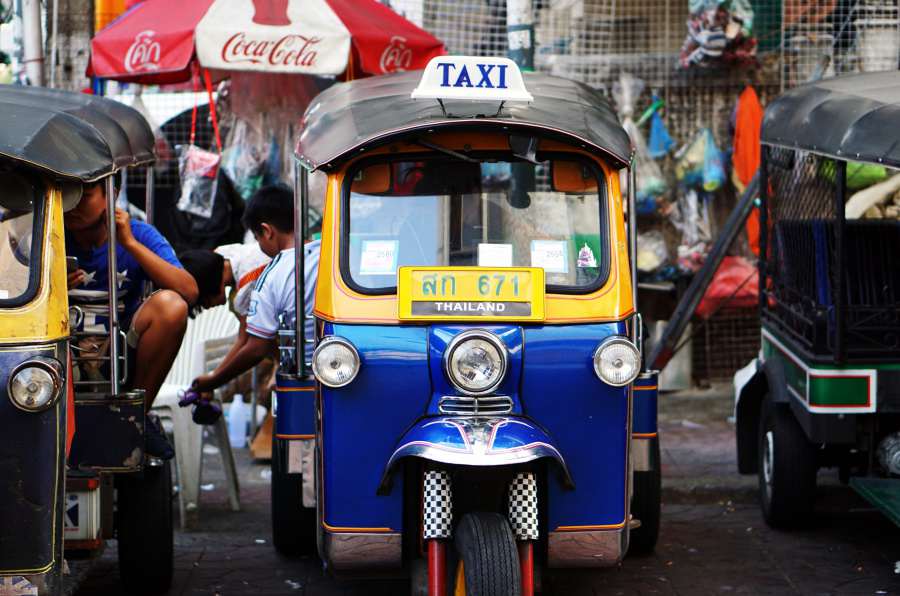
No trip to Thailand is complete without taking a tuk tuk ride
Q. Is Thailand safe?
Thailand is a popular destination that welcomes millions of tourists every year. In fact, Bangkok was the most-visited city in the world in 2018. So yes, generally speaking, Thailand is a safe place to travel to. However, common sense does apply and you should be careful when travelling with your valuable items.
- Prepare a shoulder bag to keep your passport and money. Don’t leave important belongings in the hotel room if there is no safe and elect to leave behind the reception with a receipt of what was given.
- Pickpocketing, snatch-and-grab robbery, and petty theft are the most frequent types of crime reported in Bangkok and the major tourist attractions so be aware of your surroundings.
- If you have any trouble, you can contact 191 for police, 1155 for the tourist police, 1669 for emergencies, and 199 for fire.
Respect the culture
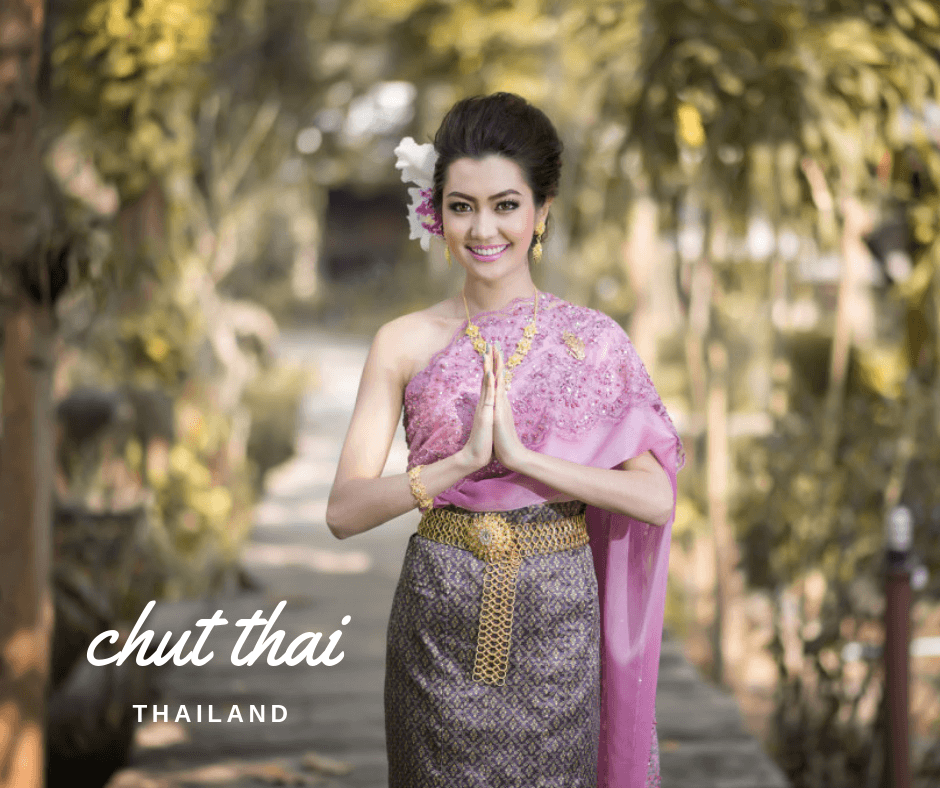
A woman in traditional Thai dress in a greeting pose
What to wear?
- Remember to dress politely and neatly in sacred places such as temples, palaces, and churches.
- Men must wear formal clothing and should avoid wearing shorts and slippers while women should not wear short skirts, see-through outfits, sleeveless shirts, skinny jeans or heavy make-up. It’s important to remember that visitors will be not allowed inside if violating these rules.
- Remove your shoes whenever you enter a place where there are images of Buddha
Greetings and public etiquette
- When greeting Thai people, place two hands together in front of the chest with head slightly bent
- Remember to take off shoes and avoid stepping on the door’s threshold when entering a house
- Always show respect to the royal family by never speaking ill of any member, as well as the elderly
- Avoid speaking loudly in public places.
Gestures and body language
- Do not use your feet to point or touch someone’s body.
- If you are a woman, do not touch monks. If a woman wants to give something to a monk, they must first pass through a man.
- Do not rub people’s heads even if it’s a child because the head is the most sacred part of the body in Thai culture.
Religious customs
- Don’t point your feet towards any type of Buddha statue
- Dress cleanly and neatly while visiting temples and pagodas
- Walk clockwise around Buddhist monuments and never turn your back on Buddha
- Don’t take photos of monks without asking permission
- Always cover your shoulders and knees when entering sacred spaces
Eating and drinking tips
- Chopsticks are mainly used for noodles, not rice-based dishes
- Use the spoon in your right hand and fork in the left
- Don’t handle food or communal serving utensils with your left hand
- Try not to leave food on your plate, especially meat and vegetables from the main dishes

Where can we take you?
Popular posts
Sep 10,2023
Best places to visit in Cambodia: top 10 destinations
Sep 13,2019
The best time of year to visit Vietnam
May 21,2019
Vietnam two week itinerary - All you need for planning
Feb 20,2019
Best places to visit in Vietnam: top 12 destinations
Feb 20,2019
Best places to visit in Vietnam: top 12 destinations





